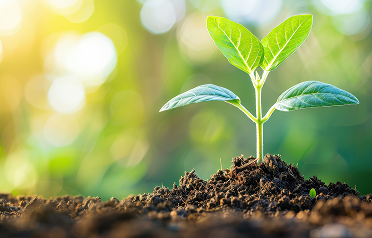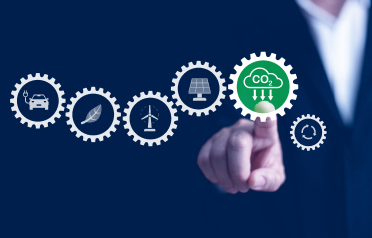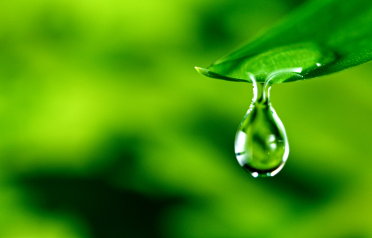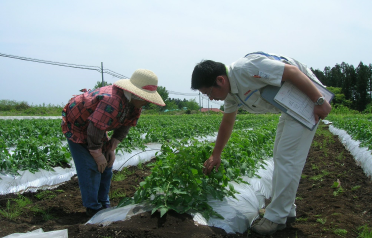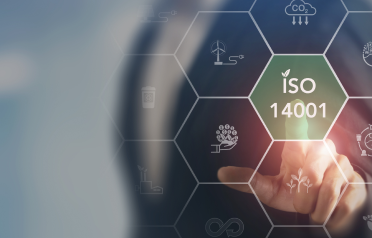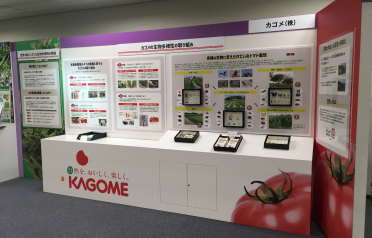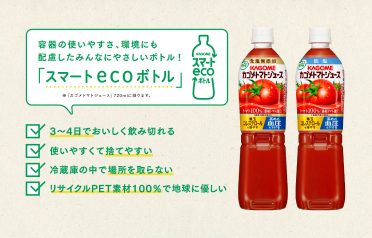



持続可能な地球環境


カゴメグループは、自然の恵みを享受し、お客様に新しい食やサービスをお届けする企業の責任として、「地球温暖化防止」「資源の有効活用」「水の保全」「持続可能な農業」等、持続可能な地球環境への取り組みを進めています。
貢献できるSDGs
品質・環境方針
自然の恵みを活かして人々の健康に貢献してきたカゴメのモノづくりは、「畑が第一の工場」という考えのもと、野菜の種子や土づくりから取組み、安全で高品質な原料づくりを基本としてきました。その自然の恵みを享受し続けるためには、豊かな自然環境のもとでの持続的な農業の営みが欠かせず、地球環境の保全と自然を活かしたモノづくりを両立させていくことは、カゴメグループの事業活動が将来にわたり成長し続けるために不可欠なことです。
このような品質(モノづくり)と環境に関する理念の共通性や活動上の関連性から、従来それぞれに「品質方針」「環境方針」として掲げられてきたものを統合し、「品質・環境方針」として2017年10月に制定しました。カゴメが情熱を込めて取り組んできたモノづくりと同じ想いで環境保全活動にも注力することで、持続可能な社会の実現を目指す、という経営の意思がこの「品質・環境方針」に込められています。
1. 野菜による美味しさと健康価値で、大切な人の健康長寿に貢献します。
2. 国内外のパートナーと種子・畑から一貫した安全な農産原料づくりに取り組みます。
3. 野菜を育む水・土・大気を守り、豊かな自然をつくる農業を未来につなげ、得られた恵みを有効に活用します。
4. 法令や自主基準を順守し、しくみや行動をレベルアップし続けることで、安全で環境に配慮した商品をお客様にお届けします。
5. お客様へ商品やサービスの確かさをお届けしつつ、お客様の声を企業活動へ反映します。
カゴメ環境マネジメントシステム
カゴメグループは2017年に制定した品質・環境方針に基づき、社長以下全部門・全事業所の役割を明確化したカゴメ環境マネジメントシステムを運用しています。具体的には、品質・環境方針、及び、中期経営計画に沿って中長期の環境マネジメント計画を定め、その目標の達成に向け年度ごとの目標を設定しています。各部門・事業所は、それらの目標に沿って環境保全活動を推進し、経営層、各部門長・事業所長が活動実績を定期的にチェック・アンド・レビューすることで、中長期の取り組み方針・目標の更新、及び、次年度の目標設定をしています。
ISO14001認証取得状況
カゴメは、ISO14001に基づく環境マネジメントシステムを運用しており、外部審査員によるISO14001認証維持のための審査と、社内監査員による内部環境監査を実施し、環境マネジメントシステムの適正な運用と高度化に努めています。カゴメでは、工場、支社・支店・営業所、本社スタッフ部門等、国内の全部門を統合してISO14001の認証を取得しています。
(グループ全体の生産拠点のISO14001取得率は40%)


カゴメ環境マネジメント計画
近年の地球温暖化や生物多様性の低下等、環境問題は世界的な喫緊の社会課題となっています。
カゴメグループ は、環境への取組みを企業の社会的責任として捉え、法令を順守し、事業活動による環境汚染の防止に努めています。更に、社会の要請に応え、地球環境の保全や資源の有効活用等、社会に貢献できる課題を盛り込んで、第3次中期経営計画(2022~2025年度)における「カゴメ環境マネジメント計画」を策定し、2022年度からスタートしました。
| 区分 | 課題 | 2025年のKPI | |
| 1.地球温暖化防止 | 1)カゴメグループ温室効果ガス(GHG)中長期削減計画の遂行 | 2050年カーボンニュートラルの実現に向け、カゴメグループのGHG排出量の総量削減 |
Scope1・2:20年比21%以上削減 (114千t-CO2e以下) |
|---|---|---|---|
|
Scope3:20年比6.5%以上削減 (1,230千t-CO2e以下) |
|||
| 太陽光発電の導入 | 1工場に追加導入 | ||
| バイオマスエネルギー活用 | 2工場に導入 | ||
| サプライヤー・委託先のCO2削減の推進 | 総量を5.2%削減(2021年比) | ||
| 物流におけるCO2毎年1%削減(生産量あたり) | 原単位を4%削減(2021年比) | ||
| 2.資源の有効活用 | 1)原料調達から製品流通における食品ロスの削減 | 原料の廃棄削減 |
原料廃棄量の50%削減 (2018年比、2030年目標) |
| 製品(仕掛品、商談サンプル含)の廃棄削減 |
製品廃棄量の50%削減 (2018年比、2030年目標) |
||
| 2)カゴメプラスチック方針の実働 |
・石油から新たにつくられるプラスチックの使用抑制 ・資源循環が可能なリサイクル素材や植物由来素材への置き換え推進 |
石油由来素材のストローの使用ゼロ化(2030年目標) | |
| リサイクル素材又は植物由来素材への50%以上置き換え(2030年目標) | |||
| 3)廃棄物のリサイクルによる資源循環の推進 | ゼロエミッションの継続 | ゼロエミッションの維持 | |
| 食品廃棄物の削減とリサイクル率の維持 | 食品リサイクル率95%以上の維持 | ||
| 3.水の保全 | 1)国内工場の取水量の削減 | 取水量の毎年1%削減(生産量あたり) | 原単位を4%削減(2021年比) |
| 2)水の浄化と循環利用の推進 | 地域の排水基準の順守 | 排水基準順守 | |
| 3)高リスク拠点への対応(主要サプライヤー) | 主要サプライヤーの実態調査と対策実施 | 高リスク拠点の対策決定 | |
| 4.持続可能な農業 | 1)国内外の持続可能な農業の推進 | スマートアグリ事業の推進 | 収量増大、灌漑量低減などの実現(Low input/high output農業の実現) |
| 2)持続可能な原材料調達の推進(FSC、RSPOなど) | FSC認証マークの紙容器への表示 | 対象全商品に表示 | |
| 3)野菜栽培での生物多様性保全 | 生物多様性保全型土着天敵活用技術の開発(生きものと共生する農場) | 生きものと共生する農場、及び一部の農家で検証した技術をまとめたガイドブック作成 | |
| 5.しくみのレベルアップ | 1)全従業員の環境に対する意識・行動の高揚 | 全従業員に対する環境教育体制の確立 | 部門別環境教育実施 |
| 全社環境イベントの推進 | 全社・全事業所での活動実施 | ||
| 2)カゴメ環境マネジメントシステム(KEMS)の定着と継続的改善 | KEMSの定着と継続的改善(ISO14001認証維持) | 外部審査での再指摘件数1件以下 | |
| 6.コミュニケーション | 1)企業価値向上のための積極的なコミュニケーション展開 | 機関投資家・消費者の評価向上のための情報発信 | CDP気候変動、水セキュリティーで、A評価獲得 |
※他の目標年度の場合は表中に記載
Scope1:事業者自らによる温室効果ガスの直接排出(燃料の燃焼、工業プロセス)
Scope2:他社から提供された電気、熱・蒸気の使用に伴う間接排出
Scope3:Scope1、Scope2以外の間接排出(事業者の活動に関連する他社の排出)



